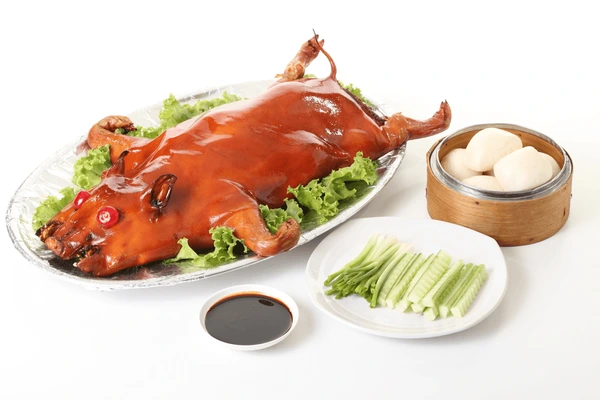waynethomasyorke.com – Babi Guling, or suckling pig, is a famous Balinese dish that is celebrated for its succulent meat and crispy skin. This traditional delicacy is a must-try for anyone visiting Bali, offering a unique taste experience that captures the essence of Balinese culinary art. Known for its rich flavors and elaborate preparation, Babi Guling is often reserved for special occasions and communal gatherings.
The Origins of Babi Guling
Babi Guling has its roots in Balinese Hindu culture, where pork is a prominent feature in religious ceremonies and feasts. The dish is traditionally prepared for temple festivals, weddings, and other significant events, symbolizing prosperity and celebration. Over time, Babi Guling has become a popular dish beyond ceremonial contexts, enjoyed by locals and tourists alike.
The Art of Preparing Babi Guling
Preparing Babi Guling is a labor-intensive process that requires skill and patience. The key steps include:
- Selection of the Pig: The dish typically uses a young pig, chosen for its tender meat and the ability to absorb flavors well.
- Marination: The pig is marinated with a blend of traditional Balinese spices known as “basa gede.” This mixture often includes turmeric, coriander, lemongrass, garlic, shallots, and chili, infusing the meat with deep flavors.
- Stuffing and Roasting: The pig is stuffed with spices and herbs, then roasted on a spit over an open fire. The slow-roasting process ensures the meat remains juicy while the skin becomes perfectly crispy.
The Flavor Profile of Babi Guling
Babi Guling is renowned for its complex flavor profile, combining savory, spicy, and aromatic notes. The marination process allows the spices to permeate the meat, creating layers of flavor that are both bold and harmonious. The crispy skin provides a satisfying contrast to the tender, flavorful meat.
Serving and Accompaniments
Babi Guling is traditionally served with a variety of side dishes that complement its rich flavors:
- Lawar: A Balinese salad made with a mix of vegetables, coconut, and minced meat, often seasoned with fresh herbs and spices.
- Sambal Matah: A raw Balinese sambal made with shallots, lemongrass, and lime, adding a fresh and spicy kick.
- Steamed Rice: A staple accompaniment that balances the intensity of the spices and flavors.
Cultural Significance of Babi Guling
Babi Guling holds a special place in Balinese culture, symbolizing abundance and togetherness. Its preparation and consumption are often communal activities, fostering a sense of community and shared experience. The dish is not only a culinary delight but also a representation of Balinese tradition and hospitality.
Conclusion
Babi Guling is a testament to the rich culinary heritage of Bali, offering a taste of its vibrant culture and traditional cooking techniques. Whether enjoyed during a festive celebration or as a special meal at a local warung (restaurant), Babi Guling provides a memorable and delicious experience for those who savor its exquisite flavors. As a symbol of Balinese cuisine, it continues to captivate and delight food enthusiasts from around the world.
